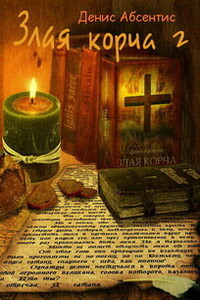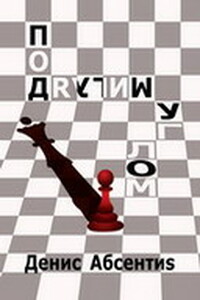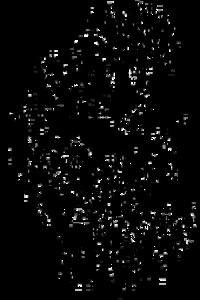106. Munro, Dana Carleton. The fourth crusade. Vol. 3, Issue 1 of Translations and reprints from the original sources of European history. The Department of history of the University of Pennsylvania, 1907.
107. Neale, Adam. Researches Respecting the Natural History, Chemical Analysis, and Medicinal Virtues, of the Spur, Or Ergot of Rye (1923). BiblioLife, 2010.
108. Nemes C. N. The medical and surgical treatment of the pilgrims of the Jacobean Roads in medieval times // The history of anesthesia: proceedings of the Fifth International Symposium on the History of Anesthesia, Santiago, Spain, 19–23 September 2001. International Congress Series, Volume 1242, December 2002, Elsevier Health Sciences, 2002
109. Nemes C., Goerig M. The medical and surgical treatment of the pilgrims of the Jacobean Roads in medieval times. Part 2 // The history of anesthesia: proceedings of the Fifth International Symposium on the History of Anesthesia, Santiago, Spain, 19–23 September 2001. International Congress Series, Volume 1242, December 2002. Elsevier Health Sciences, 2002, pp. 487–494.
110. On ergotism // The veterinarian. (Verheyen M. S. Annales de Médecine Vétérinaire, Bruxelles, Dec., 1861). London, 1862.
111. Ostrovskii N. I., Kryukova M. A. The field culture of ergot in the USSR, 1963. 7 p.
112. Paracelsus (Theophrastus Bombastus von Hohenheim, 1493–1541): essential theoretical writings. (1589) // Paracelsus; Weeks, Andrew. Volume 5 of Aries book series. BRILL, 2008.
113. PAŽOUTOVÁ, S; CAGAŠ, B et. al. Host Specialization of Different Populations of Ergot // Czech J. Genet. Plant Breed., 38, 2002 (2): 75–81.
114. Peabody F. J. A 350-Year-Old American Legume in Paris // Castanea, Vol. 47, No. 1 (Mar., 1982). pp. 99–104.
115. Peter M. Scott, Lawrence Guillaume A. Losses of ergot alkaloids during making of bread and pancakes. J. Agric. Food Chem., 1982, 30 (3). pp. 445–450.
116. Phillips, Charles Douglas Fergusson. Materia medica and therapeutics. J. and A. Churchill, 1874.
117. Phillips, Jonathan; Phillips, Jonathan P. The Second Crusade: extending the frontiers of Christendom. Yale University Press, 2007.
118. Pieter W. J. van Dongen, Akosua NJ. A. de Groot. History of ergot alkaloids from ergotism to ergometrine // European Journal of Obstetrics & Gynecology and Reproductive Biology 60 (1995). pp. 109–116
119. Purchase I. F. H. Mycotoxins. Elsevier Scientific Pub. Co., 1974.
120. Ralls K. The Templars and the Grail knights of the quest. Quest Books, 2003.
121. Read, Al. Phil. Traité du Seigle ergoté. Strasbourg, 1771.
122. Report of the Secretary of Agriculture for the year of 1884 / Executive documents of the House of Representatives. United States. Dept. of Agriculture. Govt. Print. Off., 1884
123. Riley-Smith, Jonathan. The first crusaders, 1095–1131. Cambridge University Press, 1998.
124. Riley-Smith, Jonathan. The Oxford History of the Crusades. Oxford University Press, 2002.
125. Risi, Armin; Zurrer, Ronald. Vegetarisch leben. Govinda-Verlag, 1993.
126. Rolleston, Thomas William. Myths & legends of the Celtic race. 1911.
127. Salway, P.; Dell, W. Plague at Athens. Greece and Rome, Second Series, Vol. 2, No. 2 (June), 1955. pp. 62–70.
128. Schiff Paul L., Jr., PhD. Ergot and Its Alkaloids. Am J Pharm Educ. October 15; 70 (5): 98, 2006.
129. Scott P. M. Ergot alkaloids: extent of human and animal exposure // World Mycotoxin Journal. Wageningen Academic Publishers, Volume 2, Number 2, May 2009. pp. 141–149
130. Seymour D, Franklin M. A. Headache Through the Ages. 2005.
131. Sherman, Larry R.; Zimmerman, Michael R. Ergotism and Its Effects on Society and Religion // Journal of Nutritional Immunology, Volume 2, Issue 3, May 1994. pp. 127–136.
132. Sidky H. Witchcraft, Lycanthropy, Drugs and Disease: An Anthropological Study of the European Witch-Hunts. 1997
133. Sidky, H. Witchcraft, lycanthropy, drugs, and disease: an anthropological study of the European witch-hunts. Vol. 70 of American University Studies. Peter Lang, 1997.
134. Smith, G. Elliot. Evolution of the Dragon, 1919.



